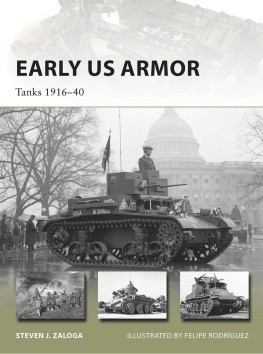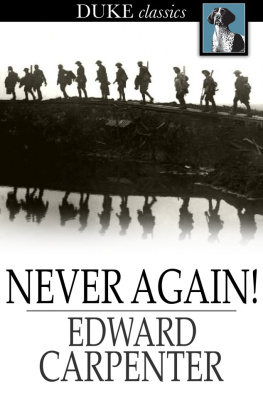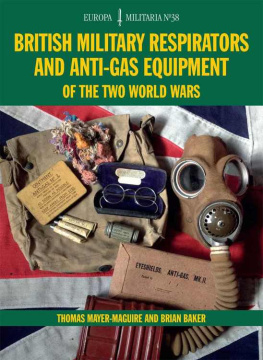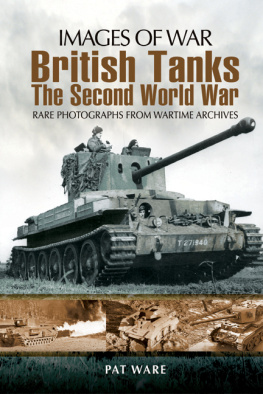John B. Carpenter - The Best British Tanks in the World War I: The best technologies of world wars
Here you can read online John B. Carpenter - The Best British Tanks in the World War I: The best technologies of world wars full text of the book (entire story) in english for free. Download pdf and epub, get meaning, cover and reviews about this ebook. year: 2020, genre: Non-fiction. Description of the work, (preface) as well as reviews are available. Best literature library LitArk.com created for fans of good reading and offers a wide selection of genres:
Romance novel
Science fiction
Adventure
Detective
Science
History
Home and family
Prose
Art
Politics
Computer
Non-fiction
Religion
Business
Children
Humor
Choose a favorite category and find really read worthwhile books. Enjoy immersion in the world of imagination, feel the emotions of the characters or learn something new for yourself, make an fascinating discovery.

- Book:The Best British Tanks in the World War I: The best technologies of world wars
- Author:
- Genre:
- Year:2020
- Rating:3 / 5
- Favourites:Add to favourites
- Your mark:
- 60
- 1
- 2
- 3
- 4
- 5
The Best British Tanks in the World War I: The best technologies of world wars: summary, description and annotation
We offer to read an annotation, description, summary or preface (depends on what the author of the book "The Best British Tanks in the World War I: The best technologies of world wars" wrote himself). If you haven't found the necessary information about the book — write in the comments, we will try to find it.
John B. Carpenter: author's other books
Who wrote The Best British Tanks in the World War I: The best technologies of world wars? Find out the surname, the name of the author of the book and a list of all author's works by series.
The Best British Tanks in the World War I: The best technologies of world wars — read online for free the complete book (whole text) full work
Below is the text of the book, divided by pages. System saving the place of the last page read, allows you to conveniently read the book "The Best British Tanks in the World War I: The best technologies of world wars" online for free, without having to search again every time where you left off. Put a bookmark, and you can go to the page where you finished reading at any time.
Font size:
Interval:
Bookmark:
The Best British Tanks
in the World War I
The best technologies of world wars
John B. Carpenter
All rights reserved
John Carpenter , 2017
Camea Publish, 2018
Cover design by Dennis Westingen
Fotos by:
Gina Smith
Tanya Dolski
Sam Sanderson
Bill Carson
Here is an updated edition of the book "British Tanks Mark Series in the World War I". In it, we look at other models of British tanks of the early 20th century and learn about the organization of British tank forces.
Tanks appeared an attempt to break the stalemate of a positional war. Machine guns and quick-firing cannons swept the advancing infantry units clean. Neither the long-lasting artillery preparation nor the flamethrowers and chemical weapons tested by the Germans helped. It urgently required an armored combat vehicle capable of acting directly on the battlefield, suppressing the enemy's firing points, and paving the way for the infantry through wire fences.
The first attempts to create such a machine were made before the war. Many inventors from different countries wished to possess the priority in the invention of the tank. But the first to realize the idea and successfully used tanks in combat conditions the British.
English heavy tanks of the First World War had a specific shape, not repeated by anyone else, in the form of a diamond-shaped body with enclosing caterpillars. It was conditioned by the appointment of the machine: to lay the way to the infantry through wire barriers by moving through the trenches and funnels to the battlefield.
In this book, we will look at several models of the British tanks and armored vehicles.
Content:
Introduction. History before the advent of the tank

Even before the advent of tanks, people counted only on their own strength, thinking about how to increase them as much as possible. There were also plans for a relative victory over some other, not just their own, strength. But in reality, some blacksmiths tried to make the carapace more precise, others sharper the sword. Shields of the soldiers of individual units began to achieve human growth.
Hiding behind them, they could shower the enemy with arrows. To storm cities, huge assault towers were made of wood, which were covered with fresh animal skins to protect them from fire. Rolling these devices had to be done manually, but with the help of the overhead bridge it was possible to move to the wall.

Siege Tower
In the Middle Ages a kind of "tank" was a heavily armed knight in armor who defended himself and the horse. To resist, the infantry fenced in rows of sharp stakes, however, to install them, it took time, so the Czech commander Zizka preferred to wall out with special wagons linked together. Warriors Zizka (Hussites) put guns on their carts so that the cavalry of the enemy was powerless. The idea to make such constructions mobile came to the brilliant artist, scientist and engineer of the Renaissance Leonardo da Vinci.
In his letter to the Milanese Duke of Sforza, he suggested building self-propelled and completely invulnerable to the enemy military carts, which, according to his plan, were supposed to crush any enemy. Wheels were driven by people. His compatriot Guido da Vigelano had already proposed for a wheeled vehicle a drive like a windmill with a gear transmission to the wheel.

Model of the Leonardo da Vinci tank
According to the project of Henry VIII in England, a structure was built-in fact a wooden block-hoist, on wheels, horses were in the lower harness, and musketeers at the top carrying fire through special loopholes. Outwardly this cart looked intimidating, but the fighting value was very low.
In the XV century in Europe, used as a means of transport so-called stage vehicles, massive, metal-bound wheels of which had the shape of a cone. Thanks to this, when the wheels were pressed into the wet ground, the area of their support increased - the prototype of the modern caterpillar drive, more cross-country than the wheel, at the level of the idea was born in 1713.
The project, proposed by the Frenchman D'Herman and received a positive response from the Academy of Sciences, was a heavy-duty truck that was to roll on "endless" belts from wooden skating rinks, which were joined together by slats on hinges. In 1770, the Englishman Edgeworth took a patent for the use of rails in a wheeled vehicle.
Made of wood in the form of short sleepers, they moved in order, each time appearing under the wheels and increasing the area of pressure on the ground. Voltaire offered Catherine II wheeled wagons against the Turks. This idea he set forth in his letter to Catherine II. Variants of the caterpillar propeller were proposed by the Frenchman Dubois (1818), the British Berry (1821) Gitkot (1832). Gitkot managed to build such a caterpillar and, equipped with a steam engine, was used for two years to develop Kolokchennye lands in Lankashi. In 1837, the draft of the crew with movable tracks, containing all the main elements of the caterpillar propulsion, was patented in Russia by Captain Zagryazhsky.

The project of steam armored car James Cowan
In 1885, the English engineer James Cowen built a steam car, resembling a British tropical helmet made of cork. At the base of the car there were several sickle-shaped knives connected to the engine.
When riding, they made secant movements. Armament consisted of eight small caliber guns, as well as fifty loopholes for riflemen. On tests, the steel car was traveling at a speed of 8 km / h. But it proved to be fragile and unadapted to rough terrain, as it had five wheels: four support wheels and one for control.
In 1882, Fenders from Buenos Aires proposed a caterpillar on the leading polygon wheels, where each side of the wheel was equal to the width of the track. American Butt in 1888 equipped his steam tractor with a long caterpillar with exactly the same drive.
The outer, supporting part of the caterpillar consisted of metal plates, and the inner part was in the form of a chain that, during rewinding, hooked on the outside and forced it to move along the perimeter of the running gear. To turn the car used two wheels in the rear of the frame. Two years later, the engineer Edwards perfected the design: he placed the wheels in front, and put the trucks in one row.

The idea of a steam tractor
In 1908, the British Military Committee offered a prize to someone whose tracked vehicle could cover 40 miles without refueling. The match was won by David Roberts from R. Hornsby and son from Lincoln, who had previously built steam tractors, and designed a tractor with an internal combustion engine.
Tractor with a gasoline engine was demonstrated by the American Holt. By this time, gasoline engines have already been successfully used in road transport. (In 1885, the German inventor Karl Benz drove in his new car with a single-cylinder petrol engine, the launch of cars in the series went swiftly, in 1904, only in France they were built more than 17 thousand). On caterpillar machines with a gasoline engine in the US, they began to do business, while in England their interest was insignificant, and Hornsby sold his patents to Holt in 1912.
Next pageFont size:
Interval:
Bookmark:
Similar books «The Best British Tanks in the World War I: The best technologies of world wars»
Look at similar books to The Best British Tanks in the World War I: The best technologies of world wars. We have selected literature similar in name and meaning in the hope of providing readers with more options to find new, interesting, not yet read works.
Discussion, reviews of the book The Best British Tanks in the World War I: The best technologies of world wars and just readers' own opinions. Leave your comments, write what you think about the work, its meaning or the main characters. Specify what exactly you liked and what you didn't like, and why you think so.






